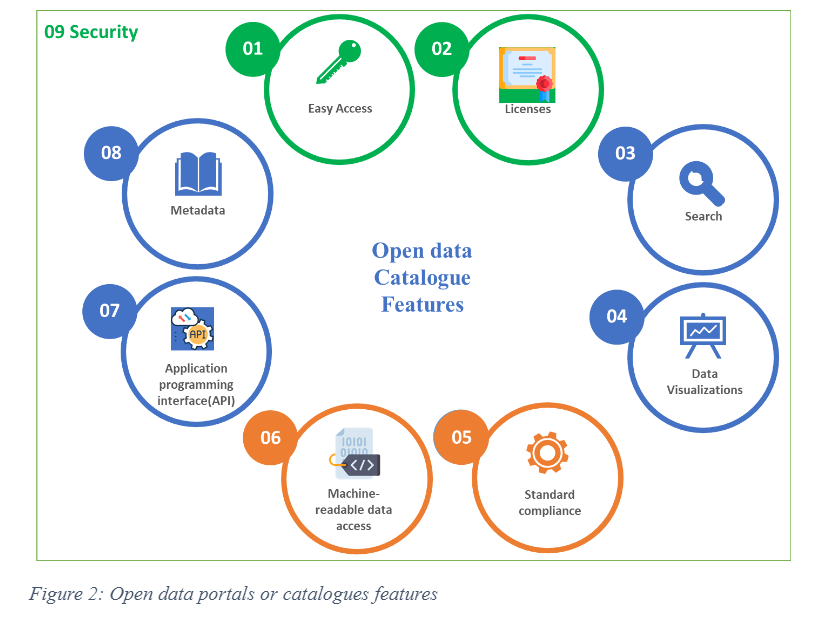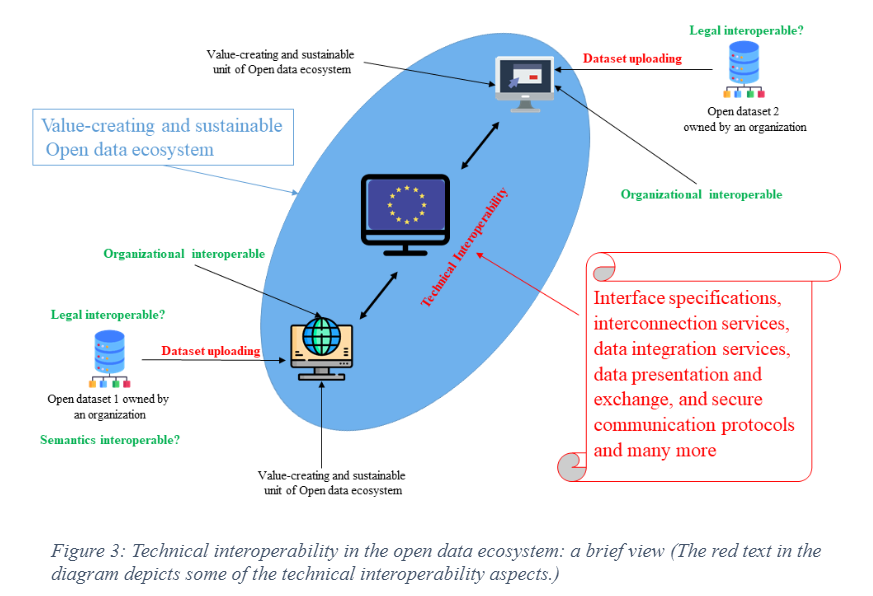“Traditionally: The user adapts to the system, Modern or better: The system adapts to the user”
Anonymous saying
Open data is data that is freely accessible for usage and distribution, even for commercial purposes. There are also other precise definitions for open data. As seen in figure 1, one of the most significant aspects to be taken into account is. By following the stages, we can see how we begin the process from the data to make it entirely accessible. Open data should be exhaustive and must be uploaded comprehensively. It should be timely for making any decisions. Open data should be a primary concern. It should be gathered by professionals or researchers. Accessible signifies that the content should be available on certain platforms via APIs or other 5-star formats. Important to consider is machine readability, however data in csv or excel formats are already deemed machine readable. When opening the data, there must be no consideration of gender or any other element. Non-proprietary implies that it must be licensed under an open license, allowing anybody to use and distribute it. When releasing open data, the data must be made available under the two most prevalent licenses, such as CC-BY and CCO. The data must also be able to be reviewed to eliminate outliers, errors, and omissions (E&O) when any end user discovers them.


There are various technological considerations associated with the process of publishing open data. In this blog, we will examine a few of the technical features of open data portals in an effort to increase the interoperability of open data. First, we shall define the interoperability term used in open data. Interoperability refers to the exchange of data or services between two systems over the internet with some governance framework. Specifically, the interoperability of open data refers to the optimal interchange of open data. According to European interoperability framework¹ four layers of interoperability exists: legal interoperability, organizational interoperability, technical interoperability, and semantic interoperability. Here we will just discuss technical interoperability, which deals with the linking of two systems or services by providing an application or infrastructure. This application or infrastructure would be based on technological solutions. However, technical interoperability includes interface specifications, connection services, data integration services, data visualization and sharing, and encrypted or secure communication protocols.
Figure 3 depicts the technical interoperability layers at work and their roles in the open data ecosystem. In terms of the role of interoperability in terms of value creation and ecosystem sustainability, the four properties of the OD ecosystem, such as user-drivenness, inclusiveness, circularity, and skill-based, need to be clarified with respect to technical interoperability aspects. Technical interoperability is an essential requirement for the OD ecosystem, like the other interoperability layers. For example, data integration, interface specifications, interconnection services, data presentation (graphs, charts, information, knowledge extraction), data exchange (within and outside the domain), communication protocols (HTTP, https, ftp, torrents), and many other topics related to open data technical interoperability, such as high-performance computing and cloud-based architectures (software-as-a-service, infrastructure-as-a-service, platform-as-a-service), need to be discussed.

From Figure 3 and the literature review (to the best of our knowledge), five types of functionality can be found directly or indirectly related to the technical interoperability of open data, such as publish, exchange, discover, transform, and collaborate. These five types can be applied to data or information in the open data ecosystem. The open government data ecosystem also elaborates over these five types of functionalities within the ecosystem². For instance, a stakeholder can interact with the system while publishing, discovering, exchanging or transforming the data or information within the ecosystem. By analyzing the open data life cycle, the tools and technologies related to technical interoperability of open data can be elaborated more rationally³.
For more information please visit: A comprehensive review of open data platforms, prevalent technologies, and functionalities
¹European interoperability framework
²J. Crusoe, why is it so challenging to cultivate open government data? Understanding impediments from an ecosystem perspective, vol. 124. Linköping: Linköping University Electronic Press, 2019. doi: 10.3384/lic.diva-156053.
³Y. Charalabidis, C. Alexopoulos, and E. Loukis, “A taxonomy of open government data research areas and topics,” J. Organ. Comput. Electron. Commer., vol. 26, no. 1–2, pp. 41–63, Apr. 2016, doi: 10.1080/10919392.2015.1124720.
Author:
University of the Aegean, Greece



